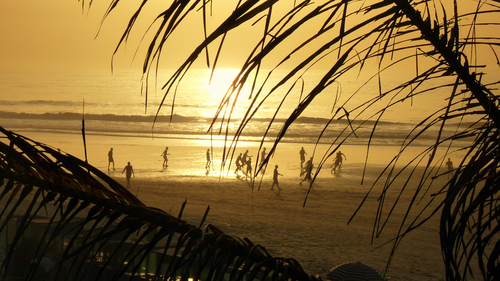
The Gambia, often referred to as "The Smiling Coast of Africa," may be Africa's smallest mainland country, but it is brimming with culture, history, and natural wonders. Stretching along the Gambia River, this unique nation offers much more than meets the eye. Here are 10 fascinating facts you may not have known about The Gambia.
The Gambia is the smallest country on mainland Africa, measuring just 11,295 square kilometres. Despite its modest size, the country is rich in history, culture, and biodiversity, packed into a narrow strip of land that stretches along the Gambia River.
The country takes its name from the River Gambia, which flows through its entirety and serves as its lifeline. This river is central to The Gambia’s history, economy, and tourism, offering everything from trade routes to boat safaris.
The Gambia is often called "The Smiling Coast of Africa" due to the warm hospitality of its people. The country's tourism slogan perfectly captures the friendly and welcoming nature of Gambians, making it a favourite destination for travellers seeking an authentic African experience.
The Gambia is entirely surrounded by Senegal, except for its coastline along the Atlantic Ocean. Its unusual shape follows the Gambia River, creating a narrow strip of land that is never more than 50km wide.
With over 560 species of birds, The Gambia is a paradise for birdwatchers. Its wetlands, forests, and riverbanks are home to exotic species such as kingfishers, bee-eaters, and ospreys, making it a top destination for nature enthusiasts.
The Gambia played a significant role in the transatlantic slave trade. The UNESCO-listed Kunta Kinteh Island (formerly James Island) and its surrounding sites serve as powerful reminders of this dark chapter in history. The island is named after the protagonist of Alex Haley’s famous novel, Roots, which brought global attention to The Gambia’s connection to the African diaspora.
The Gambia is an emerging destination for ecotourism, with its lush national parks and reserves. Abuko Nature Reserve and Kiang West National Park offer visitors the chance to see monkeys, crocodiles, and even hippos in their natural habitats.
Banjul, the country’s capital, is one of the smallest capital cities in Africa. Located on St Mary’s Island, it’s home to landmarks like Arch 22, which commemorates the 1994 coup d’état. Despite its size, Banjul is rich in colonial architecture and cultural history.
The Gambia is home to several ethnic groups, including the Mandinka, Wolof, Fula, and Jola, each contributing to the country’s vibrant cultural heritage. Traditional music, dance, and storytelling play an integral role in Gambian society, with instruments like the kora (a 21-string lute) central to their musical traditions.
Gambian cuisine is a flavourful blend of local ingredients and West African influences. Dishes such as domoda (a peanut butter stew), benachin (a one-pot rice dish), and yassa (a tangy, marinated chicken or fish dish) are must-tries for visitors.
Despite its small size, The Gambia is a treasure trove of natural beauty, cultural richness, and historical significance. From its warm-hearted people to its breathtaking landscapes, this vibrant country has something for everyone.